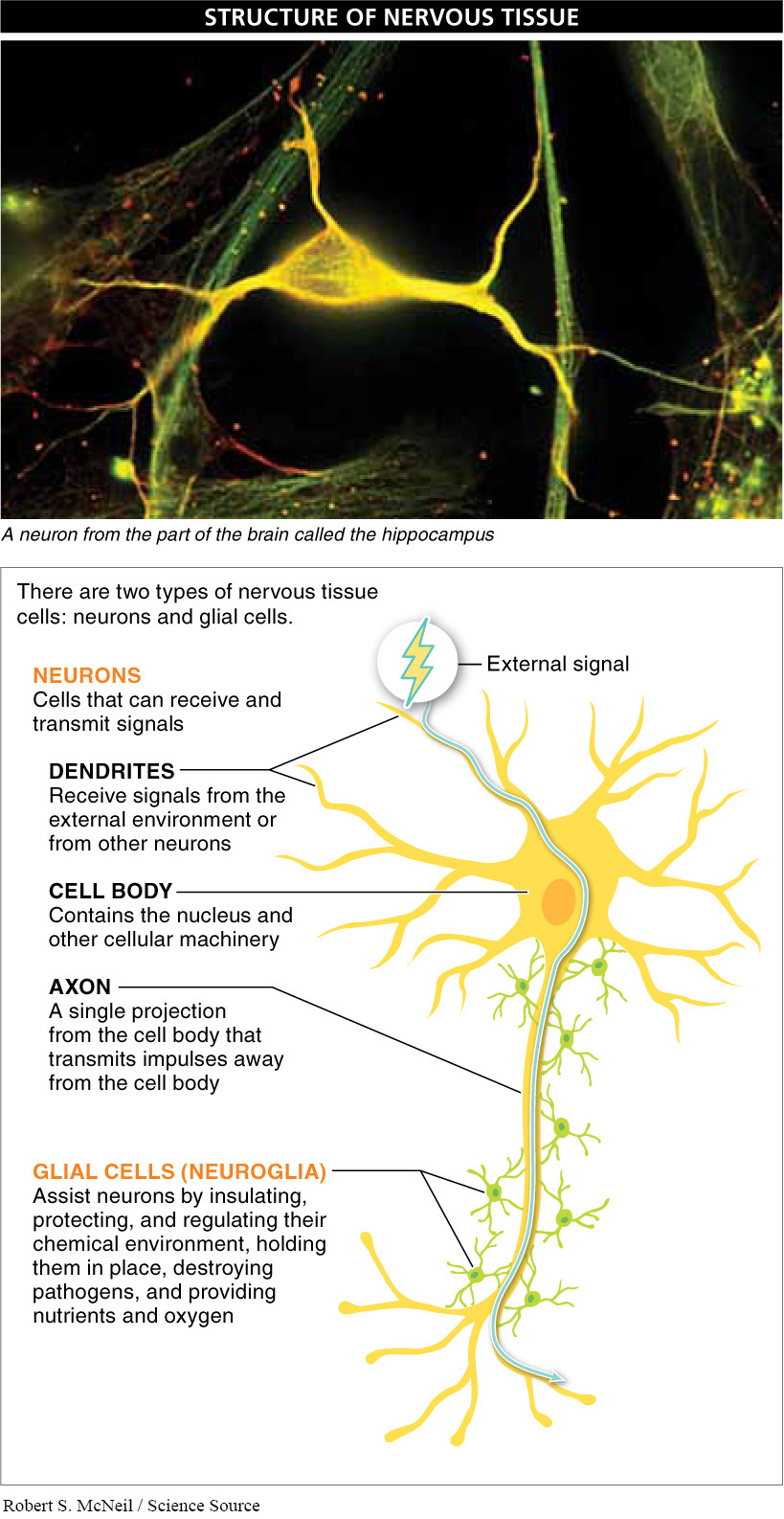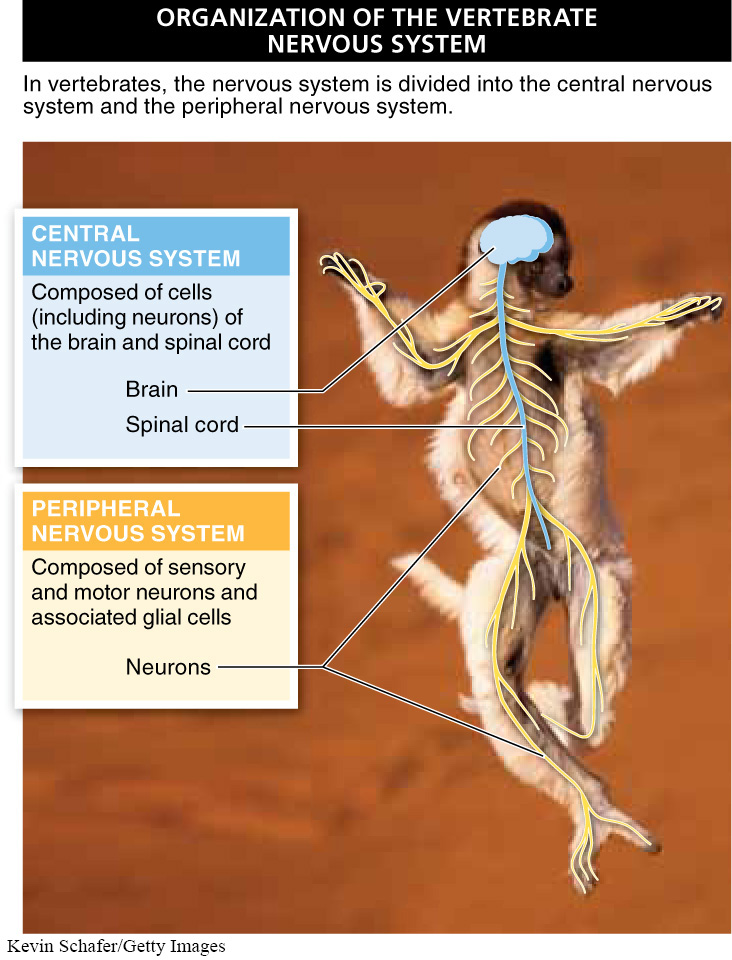The fourth type of animal tissue is nervous tissue, specialized to store and transmit information. It is responsible for much of the communication that occurs within an animal’s body. Nervous tissue enables animals to sense and respond to stimuli such as the smell of food, the sight, smell, or sounds of a predator or a potential mate, or the heat of a fire.


Neurons and glial cells are two types of nervous tissue cells (FIGURE 20-9). Neurons are the “excitable” cells that receive and transmit a signal. Most neurons have three distinctive elements: dendrites, a cell body, and an axon. Dendrites are a bit like an antenna system, specialized for receiving signals from the external environment or from other neurons. The cell body contains the nucleus and other cellular machinery found in eukaryotic cells. And the axon is a single projection that transmits impulses away from the cell body and can extend over very long distances—
801
Glial cells, also called neuroglia, are like the support staff to neurons. They do not carry signals but assist and nourish the neurons. There are numerous types of glial cells, and they vastly outnumber neurons. Together, the various types of glial cells produce insulation for neurons, protect and regulate the chemical environment around neurons, hold the neurons in place, destroy pathogens, and provide nutrients and oxygen.
All of the nervous tissue of an organism makes up its nervous system (FIGURE 20-10). In vertebrates, the nervous system is divided into the central nervous system, which includes the brain and spinal cord, and the peripheral nervous system, which includes the neurons that detect a stimulus (sensory neurons) and the neurons that transmit signals to the muscles (motor neurons) and glands in response to that stimulus (FIGURE 20-11). (The nervous system is discussed in detail in Chapter 23.)

TAKE-HOME MESSAGE 20.5
Nervous tissue is specialized to store and transmit information. There are two types of nervous tissue cells: neurons, which can receive and transmit a signal, and glial cells, which assist and provide nutrients for neurons.
What are the two major divisions of the nervous system, and what are the key elements of each?
The nervous system is divided into the central nervous system, composed of the brain and the spinal cord, and the peripheral nervous system, composed of sensory and motor neurons.